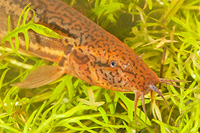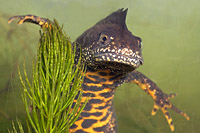Species detection
Monitoring of aquatic species can be challenging. Some cryptic or rare species are extremely difficult to capture or observe using traditional methods. With the eDNA approach, it is possible to confirm the presence of a particular species in a water body which means a revolutionary breakthrough for the monitoring of such species. Furthermore the technique is very useful to be implemented in an early warning system for invasive species as in general the detection chance is higher with the use of eDNA compared to traditional method. In that way an invasive species can be detected in time which gives a better chance of eradication and lower costs.
The eDNA approach focuses on the DNA species leave behind in the water. This eDNA is collected by sampling the water body. The often quite small amount of DNA is then amplified by a polymerase chain reaction (PCR). By using species-specific primers that only bind to the DNA of the target species, the presence of the species is shown by a bar that appears on the gel on which the results are viewed.
Click here for a a complete list of species for which the eDNA technique (primers) have been develloped.
Cryptic European species that can be monitored with the use of environmental DNA:
 |
 |
 |
 |
Pond Loach
Misgurnus fossilis |
Common spadefoot
Pelobates fuscus |
Northern Crested Newt
Triturus cristatus |
More species |
Invasive species that can be monitored with the use of environmental DNA:
 |
 |
 |
 |
American Bullfrog
Lithobates catesbeianus |